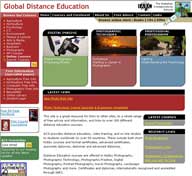LEARN THE SKILLS TO BECOME A PHOTOJOURNALIST!
Photojournalists work in publishing (electronic or print media) either self employed (freelance) or in house (employed by a publisher); contributing images and (in smaller enterprises), writing as well to published work. Opportunities are relatively strong and diverse for skilled photographers, but for the person who can also write text and process images using software, demand for this mix of skills have been very high.
